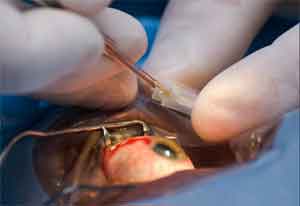- Home
- Editorial
- News
- Practice Guidelines
- Anesthesiology Guidelines
- Cancer Guidelines
- Cardiac Sciences Guidelines
- Critical Care Guidelines
- Dentistry Guidelines
- Dermatology Guidelines
- Diabetes and Endo Guidelines
- Diagnostics Guidelines
- ENT Guidelines
- Featured Practice Guidelines
- Gastroenterology Guidelines
- Geriatrics Guidelines
- Medicine Guidelines
- Nephrology Guidelines
- Neurosciences Guidelines
- Obs and Gynae Guidelines
- Ophthalmology Guidelines
- Orthopaedics Guidelines
- Paediatrics Guidelines
- Psychiatry Guidelines
- Pulmonology Guidelines
- Radiology Guidelines
- Surgery Guidelines
- Urology Guidelines
Generalized seizures during cataract surgery following peribulbar block: A case report

Local anesthesia techniques are commonly used to perform the cataract surgery. Among these techniques, peribulbar anesthesia (PBA), when compared to retrobulbar anesthesia, is more effective and safe. However, peribulbar anesthesia PBA is not without risk. Complications may arise which if not recognized early and resuscitated, can be fatal.
A 70-year-old Indian female was admitted for cataract extraction and lens implant in her left eye. Lignocaine sensitivity was done and showed no abnormal reaction. She developed generalized tonic clonic convulsions following peribulbar block. This case report attempts to highlight the need for a trained personnel, compliance with safety standards in anesthesia, awareness, and early recognition of the possible complications and their management.
For more details click on the link: https://atharvapub.net/index.php/IJCR/article/view/1047/733

Disclaimer: This site is primarily intended for healthcare professionals. Any content/information on this website does not replace the advice of medical and/or health professionals and should not be construed as medical/diagnostic advice/endorsement or prescription. Use of this site is subject to our terms of use, privacy policy, advertisement policy. © 2020 Minerva Medical Treatment Pvt Ltd